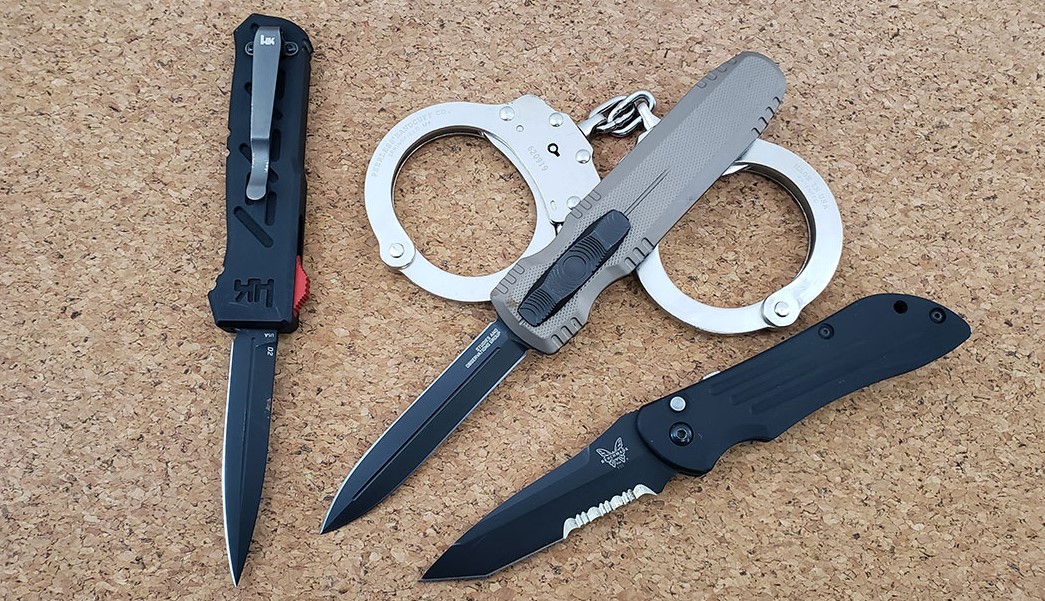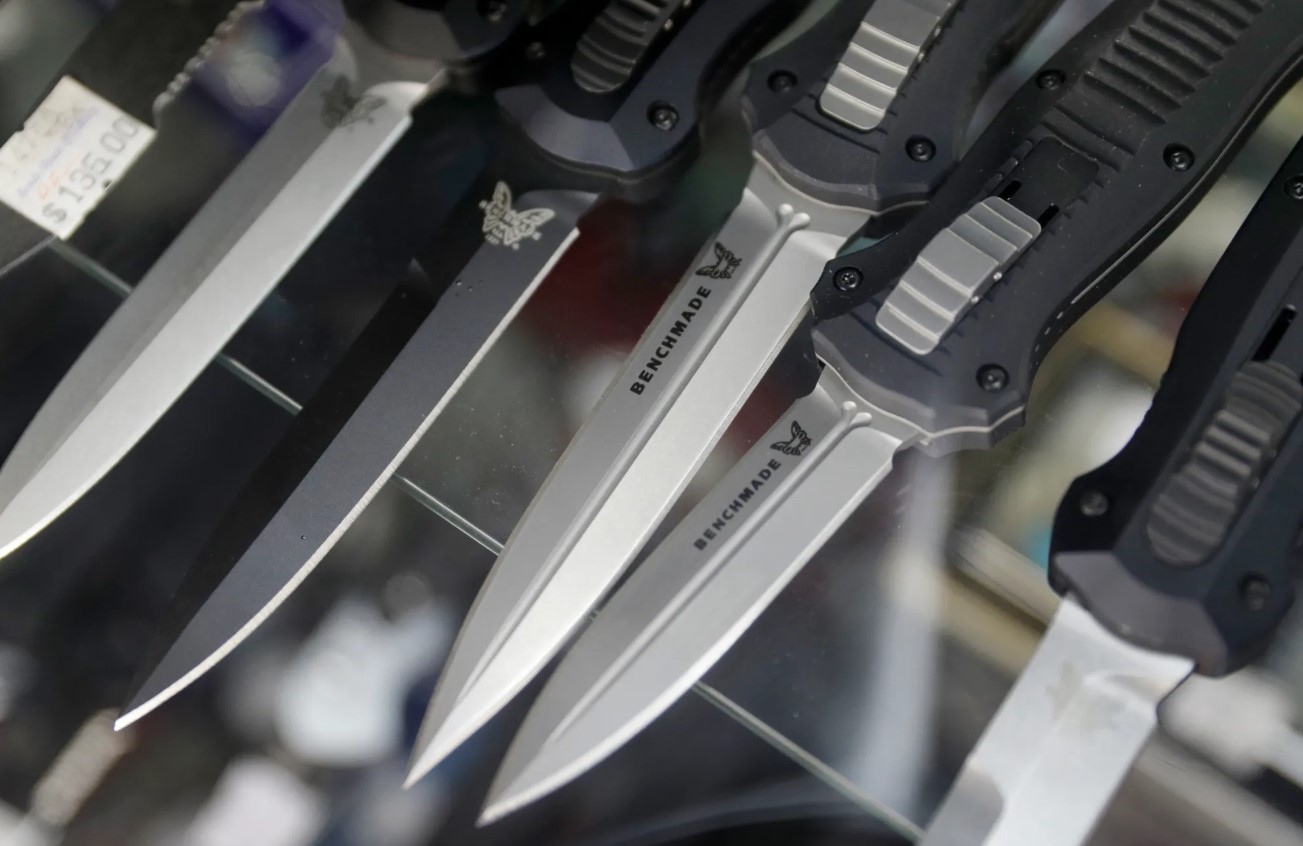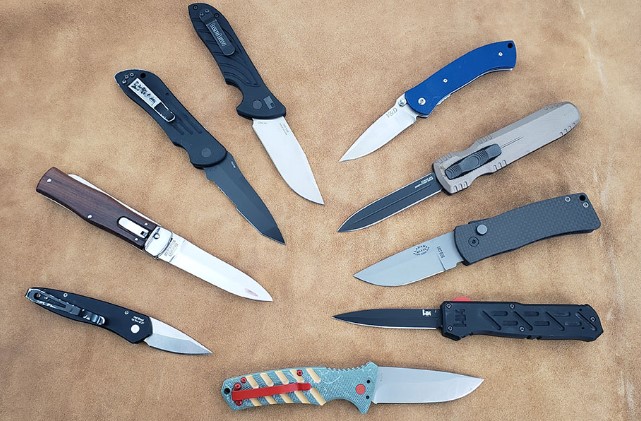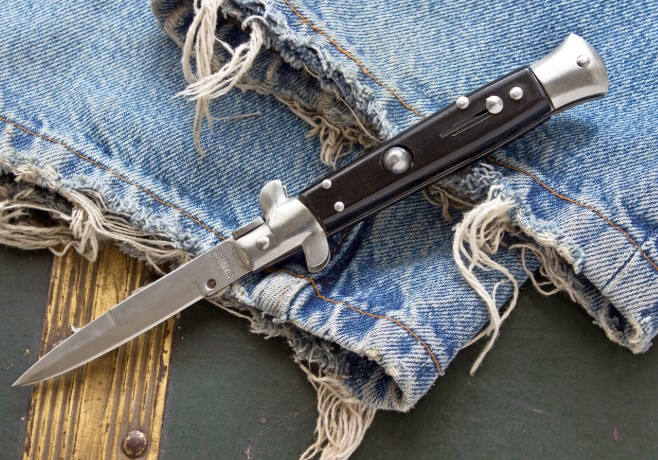Are Switchblades Legal in California? The question of knife legality, particularly concerning switchblades, is a frequent source of confusion and concern for Californians. Walk into any knife store or browse online retailers, and you’ll be met with a bewildering array of blades, each promising utility and craftsmanship. Yet, amidst this diversity, the shadow of legal restrictions looms, especially over the notorious switchblade. Are switchblades legal in California? This seemingly simple question unravels into a complex tapestry of definitions, penal codes, and nuanced interpretations that every Californian, especially knife enthusiasts, must understand. Follow Thesefldefensetool.com!!
What is a Switchblade?
To understand the legality of switchblades, we must first grasp California’s precise definition. California Penal Code Section 17235 provides the crucial definition, which is more specific and often narrower than the colloquial understanding of the term. According to California law, a “switchblade knife” is defined as:

“A knife having the appearance of a pocketknife and includes a spring blade, snap blade, gravity knife, or any other knife that is released automatically by hand pressure of:
(A) A button.
(B) Spring.
(C) Other device in the handle.
(D) Blade, or other appendage of the knife, or is released by the force of gravity or by centrifugal force.”
This definition is meticulously crafted and breaks down key elements:
- Pocketknife Appearance: The law explicitly states that the knife must have the appearance of a pocketknife. This distinction is important as it helps differentiate switchblades from other types of knives that may have similar opening mechanisms but are not traditionally considered pocketknives.
- Automatic Release Mechanism: The core of the definition lies in the automatic opening mechanism. California law specifically targets knives that open “automatically by hand pressure” through a button, spring, or other device embedded within the handle or blade itself. This eliminates knives that require manual opening, even if they can be opened quickly with practice.
- Gravity Knives and Centrifugal Force: The definition further broadens to include “gravity knives” and knives opened by “centrifugal force.” Gravity knives are designed to open by the force of gravity or inertia. Centrifugal force refers to opening a knife by flicking or swinging it forcefully. This addition ensures that knives circumventing the button/spring mechanism through these alternative methods are also captured under the legal umbrella.
Understanding this precise definition is paramount. It is not simply about a blade that opens quickly; it is about the mechanism of opening. Knives that are manually opened, even with an assisted-opening feature that requires initial manual force, are generally not considered switchblades under California law. However, knives that spring open fully and automatically with the press of a button or lever are unequivocally categorized as switchblades.
>>> Read More: Which Is Better For Self Defense Boxing Or Kickboxing?
Are Switchblades Legal in California?
Having defined what a switchblade is in California, we now confront the central question: are they legal? The answer, unequivocally, is generally no. California law explicitly prohibits various aspects related to switchblades, effectively making them largely illegal to possess, sell, manufacture, and import within the state.
California Penal Code Section 21510 outlines these prohibitions:
“Every person who does any of the following with a switchblade knife having a blade two or more inches in length is guilty of a misdemeanor:
(a) Possesses in his or her possession.
(b) Carries openly in a sheath.
(c) Carries concealed upon his or her person.
(d) Sells, offers for sale, exposes for sale, loans, transfers, or gives to any other person.
(e) Manufactures or causes to be manufactured, imports into the state, keeps for sale, or offers to keep for sale, or loans, transfers, or gives to any other person.”
This section is comprehensive and leaves little room for ambiguity. Let’s break down the key prohibitions:
- Possession: Simply possessing a switchblade knife with a blade length of two inches or more is illegal. This applies to possession in your home, vehicle, or on your person.
- Carrying: Whether carried openly in a sheath or concealed, carrying a switchblade of prohibited length is unlawful. This ban on carrying extends the restriction beyond mere possession.
- Sale and Transfer: Selling, offering for sale, loaning, transferring, or giving away a switchblade is strictly prohibited. This encompasses commercial transactions as well as private exchanges.
- Manufacture and Import: Manufacturing switchblades within California or importing them into the state is illegal. This aims to prevent the supply of switchblades within California.
Blade Length Threshold: The Two-Inch Rule

Crucially, the law specifies a two-inch blade length threshold. The prohibitions listed above apply only to switchblade knives with blades two inches or longer. This implies that switchblades with blades less than two inches in length might be legally grey areas. However, it is vital to exercise extreme caution. While not explicitly prohibited by Section 21510, local ordinances or other interpretations could still pose legal challenges. It’s generally advisable to avoid switchblades of any blade length in California to ensure full legal compliance.
Why Are Switchblades Regulated?
The regulation of switchblades in California stems from their historical association with crime and violence. During the mid-20th century, switchblades were often depicted in movies and media as the weapon of choice for gang members and criminals. This led to widespread public concern and the introduction of laws to restrict their possession and use.
California’s legislators intended to balance public safety with the legitimate use of knives as tools. By imposing restrictions on automatic knives while allowing other types of blades, the law aims to prevent misuse while accommodating lawful purposes like hunting or utility tasks.
Legal Consequences of Violating Switchblade Laws
Possession of a switchblade in violation of Penal Code 21510 can result in:
- Misdemeanor Charges: Typically, these involve fines and potential jail time.
- Search and Seizure: If law enforcement suspects unlawful possession of a switchblade, they may search the individual or vehicle.
- Criminal Record: A misdemeanor conviction can have lasting effects, including a criminal record that impacts employment or housing opportunities.
Repeated offenses or carrying a switchblade in conjunction with other illegal activities may lead to more severe penalties, such as enhanced sentences.
Other Knife Laws in California
To fully understand the legal status of switchblades, it’s essential to consider other relevant knife laws in California. These include:
- Dirks and Daggers
Dirks and daggers are defined as fixed-blade knives capable of inflicting significant harm. Unlike switchblades, these knives are not restricted by length but must be carried openly in a sheath.
- Folding Knives
Folding knives, including pocket knives, are generally legal in California as long as the blade is not exposed and locked into position. Assisted-opening knives also fall under this category if they require manual initiation.
- Knives in Schools
California Penal Code Section 626.10 prohibits knives of any kind on school grounds, except for authorized purposes like culinary classes or extracurricular activities.
>>> Read More: Is Pepper Spray Legal in Minnesota?
Common Misunderstandings About Switchblades in California

- Are All Automatic Knives Illegal?
No, not all automatic knives are considered switchblades under California law. Knives with blades under two inches or those requiring manual effort to initiate blade deployment are not classified as switchblades.
- Can You Own a Switchblade at Home?
California law prohibits the possession of switchblades in public spaces but does not explicitly ban ownership in private settings. However, transporting a switchblade from one location to another may still result in legal complications.
- What About Collectors and Enthusiasts?
Knife collectors often seek switchblades as part of their collections. While possessing switchblades for display at home is generally permissible, selling or transporting them without proper knowledge of the law can lead to legal troubles.
Practical Advice for Knife Owners in California
- Know the Law: Familiarize yourself with California Penal Code Section 21510 and other knife-related statutes to ensure compliance.
- Stick to Legal Knives: Opt for folding knives, fixed-blade knives, or assisted-opening knives that meet California’s legal standards.
- Avoid Public Display: Carrying knives, even legal ones, openly in public spaces may attract unnecessary attention from law enforcement.
- Consult Legal Experts: If unsure about the legality of a specific knife, consult an attorney specializing in California weapon laws.
Conclusion
The legality of switchblades in California is a nuanced topic governed by specific statutes and definitions. Under Penal Code Section 21510, switchblades with blades two inches or longer are largely prohibited in public spaces, with exceptions for smaller blades and certain knife types. Understanding the laws surrounding switchblades is essential for avoiding legal pitfalls and ensuring compliance.
Knife owners in California must navigate a complex legal landscape, balancing the practical uses of knives with the restrictions imposed by the state. By staying informed and adhering to the law, individuals can enjoy the utility of knives while contributing to public safety. For those seeking greater clarity or changes to existing laws, advocacy and legal consultation remain valuable tools for ensuring fair and effective legislation.
